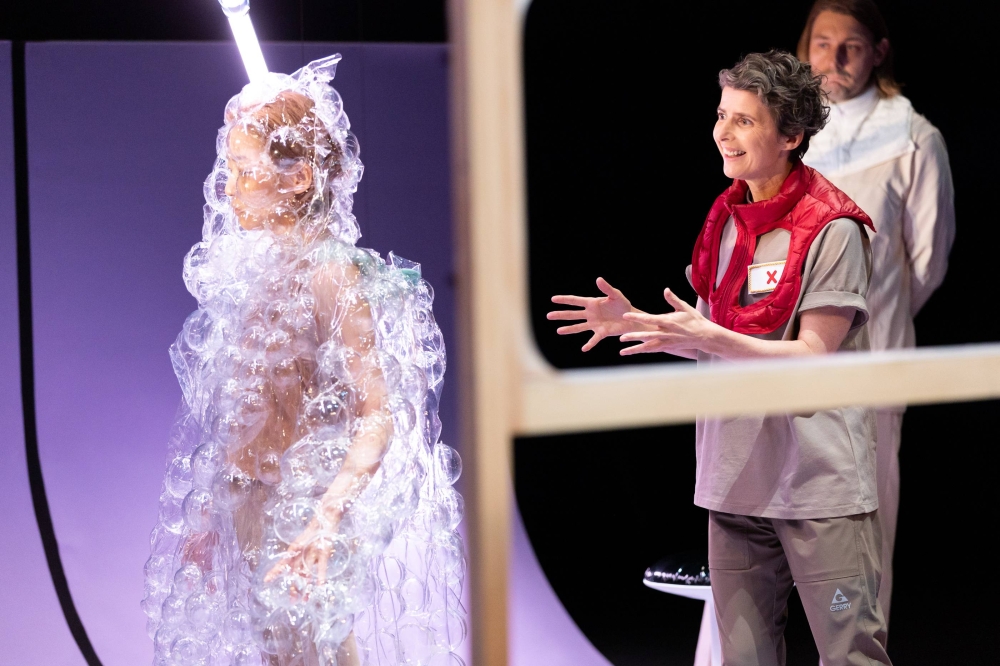The core concept of this year’s Kyoto Experiment (KEX) is “maze maze,” a Japanese mimetic term that evokes the idea of mixing. The performing arts festival’s co-directors — Yoko Kawasaki, Yuya Tsukahara and Juliet Reiko Knapp — invite participants to “consider language, identity, and culture as changeable, fluid, and plural” through a lineup of 11 performance works.
In addition to “The Window of Spaceship ‘In-Between’” by the Chelfitsch theater company, a mixed-roots project that questions what the Japanese language is today from a plurality of perspectives, the festival includes three dance pieces. Brazilian choreographer Alice Ripoll brings to Kyoto her latest work, “Lavagem,” a staging of interpersonal relationships through everyday cleaning products (lavagem means “to clean” in Portuguese). Japanese choreographer Ayaka Nakama will present “The Odoriba Legend,” a piece that investigates past dance forms from the Kansai region that now only exist as spoken lore. Meanwhile, Ruth Childs, niece of the celebrated American choreographer Lucinda Childs, brings reworkings of three of her aunt’s 1970s works to Kyoto.
Returning to KEX for his second visit is Thai director Wichaya Artamat with a new work titled “Juggle & Hide (Seven Whatchamacallits in Search of a Director).” The characters in the piece are a range of props from Artamat’s past works. The director finds innovative means of telling their stories and disentangling them from the meanings that he once forced on them.

